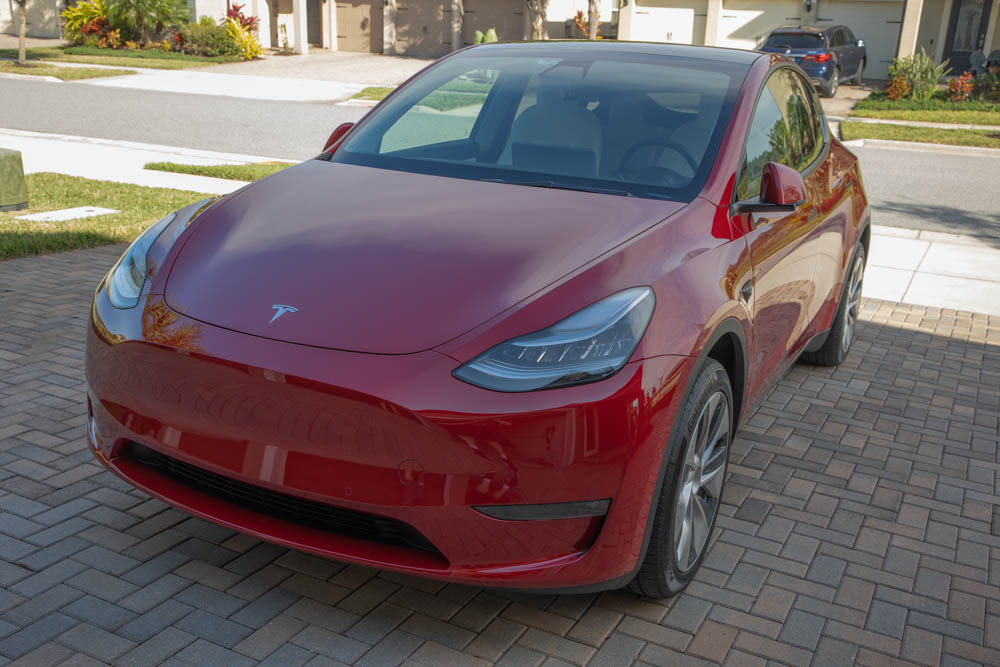Mini-review: Canon R6
posted by Jeff | Wednesday, April 7, 2021, 8:34 PM | comments: 0Within a few weeks of writing about unloading some of my older camera gear, I pulled the trigger on buying a Canon R6 mirrorless camera. I expressed my concern earlier about the apparent deprecation of the classic EF lens mount, and sure enough, it looks like that's happening as they discontinue lenses. The new RF mount, which the R6 has, is obviously the new hotness. (I also swapped video cameras, but that's a different post.)
I think it has been obvious for awhile now that ditching the mirrors in DSLR's while keeping mechanical shutters was going to be the new normal in photography. Several years ago I had a great time with the tiny Panasonic and its micro-4/3 lens on vacation in Alaska, and while there are compromises in using a small sensor like that, optically the results were pretty great. A little over two years ago, Canon announced the RF lens mount, which decreased the distance between the lens and the sensor by more than half, and without the mirrors, the cameras could physically be smaller. Having four "old" EF lenses, three of which are the mid-level "L" lenses (the more capable, and more expensive, lenses), I was in no hurry to jump into the new system, but understood it was the future.
My first full-frame Canon was the original 5D, back in 2008. It was the first time I ever had the good tools, and it made me remember just how much I loved photography (my first outing with it was at WDW). The next year, I bought the 7D, which was not full-frame, but I wanted it for the video capability. The 5D came with the EF 24-105mm f/4L IS, easily the most versatile lens I've ever had. I previously bought the EF 70-200mm f/4 (non-IS) to use with an older cropped sensor body. I also scored the 50mm f/1.4 for dreamy portrait photos. Those three lenses covered almost everything, and I shot babies and 5K's and engagement photos and weddings. Later I would add the EF 17-40mm f/4, which makes some amazing wide angle images. In any case, I was really invested in the Canon system, and I've had most of that gear for more than a decade.
Despite the nomenclature, the R6 is the spiritual successor to the 5D. The body by itself is priced similarly to the various 5D versions (when each of the four was new). The R5 is much more expensive, and much higher resolution, but I compare that to the 1D X, though not as expensive. For video, the R5 in theory can shoot 8K video when it isn't melting and shutting down, but its 4K down-sampling is actually terrible and not as good as the R6. All this to say, maybe a pro would be satisfied to have an R6, but it's likely more targeted to the high-end amateur and hobbyist like me. Adjusting for inflation, I paid about the same amount as I did for the 5D in 2008.
Getting the camera in your hand, it's strange because the body is smaller, by a lot, compared even to my original 5D. Part of that is the much smaller flange depth and lack of mirrors that I mentioned. The battery is about the same size as those they've been making forever, and there are two slots for SD cards. There is no LCD on top for your shooting parameters, which is fine because you can see them on the touch screen on the back or in the viewfinder. The controls have not fundamentally changed in more than a decade, but you have two more dials than you did back then. One dial is on top, by your right thumb, which I've used mostly for menu navigation and zooming when reviewing photos. The other new dial, and it's an interesting choice, is on every new RF lens, on the end of the barrel. I think the default is for under/over exposing or something, but I honestly haven't thought of a reason to use it. You can dial in the ISO on the touch screen, and that's the only thing I might change from one scene to the next, but just once.
From a capability perspective, the thing blowing my mind is the auto-focus. I can't even put into words how amazing it is, that it has come so far in 13 years. If you set your focus to AI servo and turn on face tracking (which can be set to humans or animals), it nails the focus so crazy fast and continuously. Note the photo of Finn below, with his eyes in sharp focus at f/2.8, while he's jumping in the air. That took no special skill to get that photo. Where 1600 ISO used to be pushing it for "good" image quality, you can safely go to 3200 and still feel pretty good about the results, while 800 seems almost indistinguishable from 100.
It can also shoot video in 4K, up to 60 fps, and it looks pretty great. I have a "real" video camera for shooting video, but what this can do is basically the most cinematic vacation video you've ever made, with dreamy blurred backgrounds. The exposure setup is a little weird, but the win is that you can set the ISO to auto. You still don't have neutral density filters built-in, obviously, which is the most annoying thing about trying to shoot video on these cameras (meaning mirrorless or DSLR photo bodies). You change your shutter speed above 1/50 to compensate for over-exposure, and the video looks like a shitty Michael Bay movie.
In the new world of magical RF lenses, the broad advantage is that they're all a little shorter than their EF counterparts, and slightly less heavy. Lenses are still where the money matters the most, and you get the most out of your investment. While I love my EF lenses, I always had a little regret that I couldn't justify buying the more expensive versions that opened to f/2.8. In the case of the long zoom, not getting the 70-200mm f/2.8 IS, with the image stabilization being the most important part, was always a slight regret. Sports and animal photography would have been much better with that lens, but it was the difference between paying just under a grand and paying $2,600, and 35-year-old me made a good choice. This time around, I don't want to make those compromises, which is why I started with the RF 24-70mm f/2.8L IS. When it's time to get the long zoom, I'll save my pennies for the better one. These lenses will be with me literally to retirement.
The RF 24-70mm f/2.8L IS is universally reviewed as great, as its EF predecessor was. If you photograph things that aren't moving, you can be blown away at how sharp and beautiful everything is, even when you freehand shoot wide at 1/30. But combine it with the insane auto-focus ability of the camera and the speed of the motors, and again, you can get crazy cats with sharp eyes without a lot of trying. I am really floored. I put the lens on my C70 cinema camera (review forthcoming) and on a gimbal, and while the AF is slightly slower, the results are still pretty stunning.
Now, I still want to use my 50mm and the 17-40mm, so I have to buy the $100 EF to RF adapter. I mean, I can't, because they've been out of stock forever, but someday I'll be able to do that. I still have my 5D body, because it isn't really worth anything, so I can dual-wield if I so desire. I sold my 7D to a friend who is getting great use out of it.
Overall, the R6 is outstanding, in the same way that the 5D was amazing 13 years ago. I know the gains in image quality, noise reduction and auto-focus have been happening for years, it's just surprising at how dramatic it is. I'm also kind of proud of myself in that my gadget problem is not that serious when I go so long between upgrades of big ticket items (cameras, TV's, game consoles, computers).
Samples below using Canon R6 with RF 24-70mm f/2.8L IS
Comments
No comments yet.

